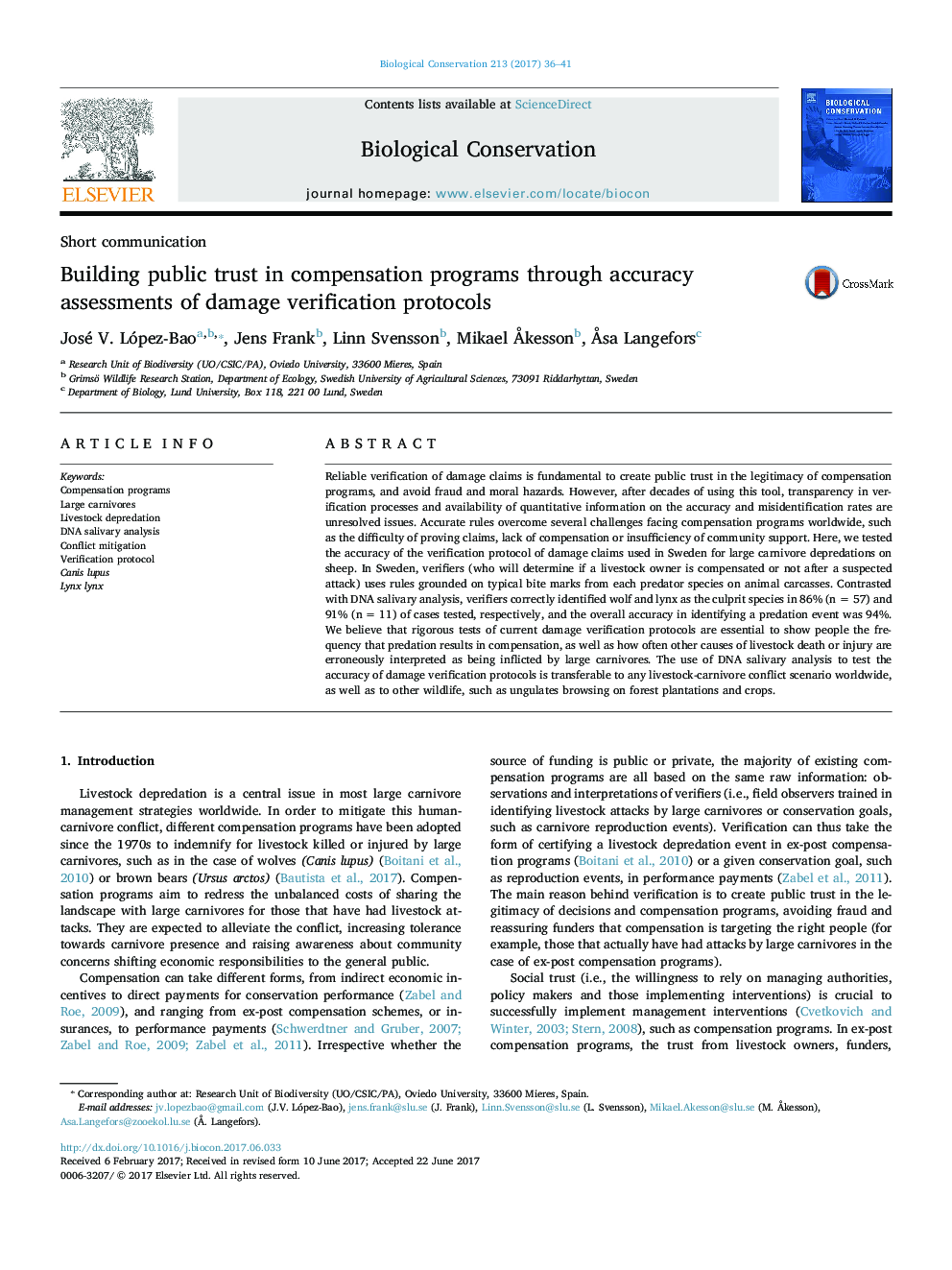| کد مقاله | کد نشریه | سال انتشار | مقاله انگلیسی | نسخه تمام متن |
|---|---|---|---|---|
| 5743000 | 1412292 | 2017 | 6 صفحه PDF | دانلود رایگان |
عنوان انگلیسی مقاله ISI
Building public trust in compensation programs through accuracy assessments of damage verification protocols
ترجمه فارسی عنوان
ایجاد اعتماد عمومی در برنامه های جبران از طریق ارزیابی دقیق پروتکل های تایید خسارت
دانلود مقاله + سفارش ترجمه
دانلود مقاله ISI انگلیسی
رایگان برای ایرانیان
کلمات کلیدی
موضوعات مرتبط
علوم زیستی و بیوفناوری
علوم کشاورزی و بیولوژیک
بوم شناسی، تکامل، رفتار و سامانه شناسی
چکیده انگلیسی
Reliable verification of damage claims is fundamental to create public trust in the legitimacy of compensation programs, and avoid fraud and moral hazards. However, after decades of using this tool, transparency in verification processes and availability of quantitative information on the accuracy and misidentification rates are unresolved issues. Accurate rules overcome several challenges facing compensation programs worldwide, such as the difficulty of proving claims, lack of compensation or insufficiency of community support. Here, we tested the accuracy of the verification protocol of damage claims used in Sweden for large carnivore depredations on sheep. In Sweden, verifiers (who will determine if a livestock owner is compensated or not after a suspected attack) uses rules grounded on typical bite marks from each predator species on animal carcasses. Contrasted with DNA salivary analysis, verifiers correctly identified wolf and lynx as the culprit species in 86% (n = 57) and 91% (n = 11) of cases tested, respectively, and the overall accuracy in identifying a predation event was 94%. We believe that rigorous tests of current damage verification protocols are essential to show people the frequency that predation results in compensation, as well as how often other causes of livestock death or injury are erroneously interpreted as being inflicted by large carnivores. The use of DNA salivary analysis to test the accuracy of damage verification protocols is transferable to any livestock-carnivore conflict scenario worldwide, as well as to other wildlife, such as ungulates browsing on forest plantations and crops.
ناشر
Database: Elsevier - ScienceDirect (ساینس دایرکت)
Journal: Biological Conservation - Volume 213, Part A, September 2017, Pages 36-41
Journal: Biological Conservation - Volume 213, Part A, September 2017, Pages 36-41
نویسندگان
José V. López-Bao, Jens Frank, Linn Svensson, Mikael Ã
kesson, Ã
sa Langefors,
